Pre-Budget Recommendation From Healthcare Industry 2023
PRE Budget Expectations FROM healthcare sector experts - 2023-24 Afzal Kamal, Editor-in-chief, Medgate Today To achieve twin objectives of Equitable and Secured Healthcare, and Holistic Vasudhaiv Swastha Kutambakam I hereby propose following suggestions A co-ordination cell/nodal agency
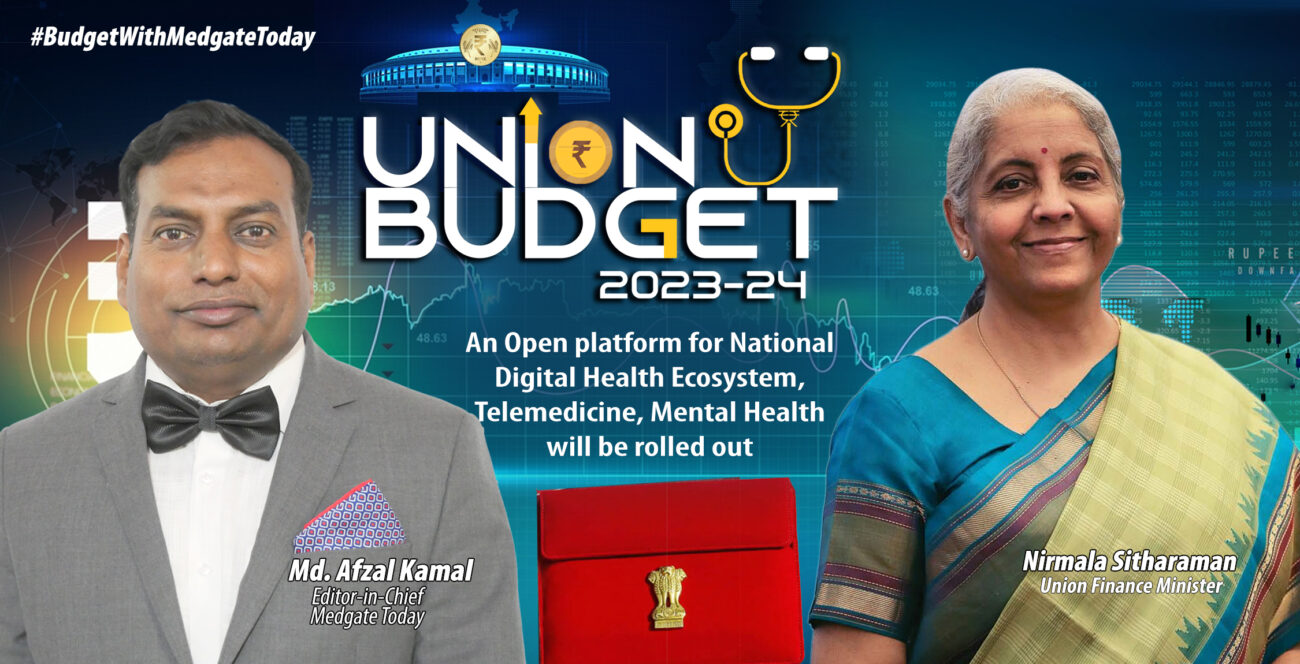
PRE Budget Expectations FROM healthcare sector experts – 2023-24

Afzal Kamal, Editor-in-chief, Medgate Today
To achieve twin objectives of Equitable and Secured Healthcare, and Holistic Vasudhaiv Swastha Kutambakam I hereby propose following suggestions
- A co-ordination cell/nodal agency could be set up to realize better outcomes of highly successful Health Diplomacy which may further be expanded into Medical Value Travel (MVT) Diplomacy and MedTech Diplomacy to promote and leverage Indian Healthcare Ecosystem’s great experience and globally recognized & acclaimed prowess in general, and to reduce healthcare trade deficit on account of higher MedTech imports and creating more GDP space for enhanced health spends, in particular.
- Enabling MSME the anchoring core of Indian healthcare delivery system, to be more participative in Make in India vision through innovative Mini PLI for MSME. This structural policy accommodation is critical for cherished goal of $50 Bn MedTech economy by 2030.
- Industry-Academia Integrated MedTech Infrastructure-Setting-up MedTech R&D Centric MedTech Universities would be a strategic paradigm shift to align Indian MedTech with Global MedTech Advancement, and enable Indian MedTech emerge as leading global player and reduce advanced MedTech imports in institutional way in long run.
- Setting up of MedTech Supply Chain Ancillaries Clusters could be logical, strategic and critical complementary value addition to growing number of MedTech Parks, on the lines of Automobile industry ancillaries’ clusters. A domestic robust supply chain integration would enhance MedTech Exports logistics outreach.
- Rising Healthcare and MedTech Cyber Security concerns are of paramount importance to strategic interest of the industry, populations and nation. These growing cyber security concerns of all stakeholders of digital public healthcare good, need to be urgently addressed………………………………………………………………………………………………………………………………………………………………………………………………………………………………………………………………………………………….
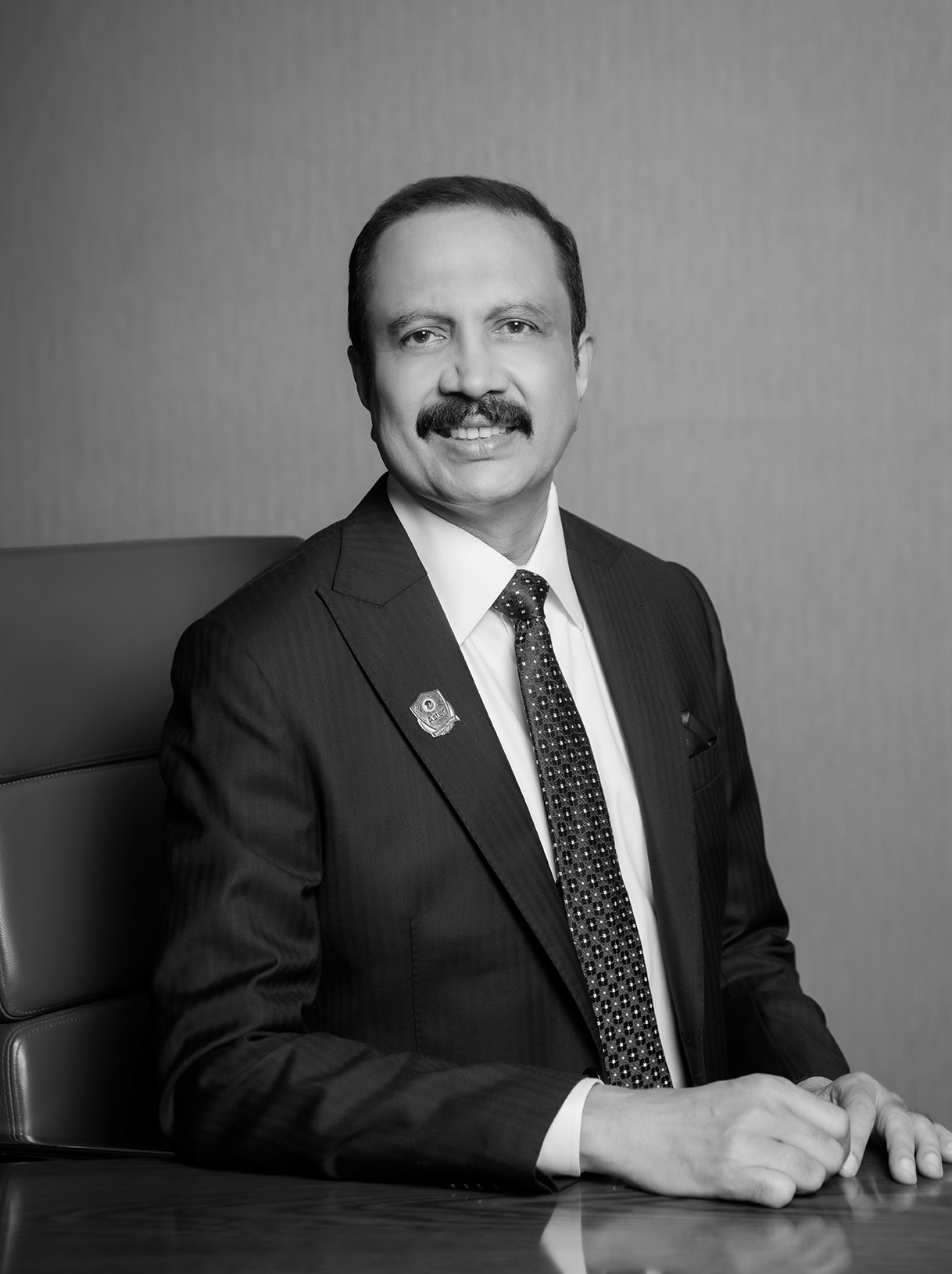 Dr. Azad Moopen, Chairman and Managing Director, Aster DM HealthcareThe COVID 19 pandemic made all of us realize to invest into healthcare to save lives. While we are coming out of the black swan event, there is fear in the minds of everyone that, God forbid, a similar threat may happen in future. It is very important that the government focus on developing more facilities to cater to the demands of the patients along with undertaking capacity building of medical professionals.Following are my suggestions
Dr. Azad Moopen, Chairman and Managing Director, Aster DM HealthcareThe COVID 19 pandemic made all of us realize to invest into healthcare to save lives. While we are coming out of the black swan event, there is fear in the minds of everyone that, God forbid, a similar threat may happen in future. It is very important that the government focus on developing more facilities to cater to the demands of the patients along with undertaking capacity building of medical professionals.Following are my suggestions
- While Ayushman Bharat has helped in providing coverage to large number of people in lower income group, unfortunately there aren’t hospitals and other healthcare facilities in the suburban and rural areas to cater to this demand. It will be appropriate if government builds more facilities in such areas or provide support to private healthcare providers to do so through viability gap funding.
- Regarding the capacity building, my suggestion is to have a medical / nursing college attached to all the 500+ district headquarter hospitals through PPP model. The Government already has infrastructure and private partner can come in with investments for building teaching institutions. This will allow large number of doctors and nurses coming out of this institutes increasing the healthcare workforce.
- There can be expansion of telemedicine into rural, hilly and tribal areas which are usually inaccessible through physical means so that they get connected to the government and private hospitals in the suburban and urban areas. This can be done through the existing telecom network or providing accessibility to telecommunication satellites by the ce3ntral government. In view of the ubiquitous presence of mobile phones in the country, this will give huge relief to marginalized population.
- Government should facilitate the promotion of accredited hospitals in the country abroad for attracting patients from foreign countries to India where the quality treatment is available at cheaper cost. This will help to increase the foreign exchange inflow and shall promote the image of the country. Sufficient funds have to be allocated for promotion of various features abroad by conducting roadshows and using social media.
- It is a welcome move to have unified health ID for all citizens in the country which will make seamless flow of healthcare data. More focus should be given on Digitalization and Artificial Intelligence with funding for research and innovation. With proper support India can be made into a hub for medical device development.
…………………………………………………………………………………………………………………………………………………………………………………………………………………………………………………………………………………………

Dr. Minnie Bodhanwala, CEO, Wadia Hospitals
The total healthcare spending of India is still one of the lowest in the world and lagging behind the GDP growth spending as compared to the budgets of other nations like USA, Canada, New Zealand, Australia etc. who spend more then 17%. The basic expectation from this budget will be to see an increased spending on the healthcare sector, in order to make available the basic healthcare infrastructure and affordable healthcare for all. There is a huge unmet need for healthcare infrastructure and professionals in the nation that needs to be addressed by providing right quality healthcare with trained professionals to improve the Healthcare indicators. The trends in diseases are changing as well, more and more deaths in India are happening because of non-communicable or lifestyle associated diseases, provisions and policies to spread awareness on the importance of prevention and how to mitigate these diseases should be considered.
Where most of the renowned Doctors in various other countries are of Indian Origin, India is not considered to be a leading hub for Healthcare, efforts need to be focused in making India a Hub of excellence for Healthcare services by increasing spending on technology and Infrastructure. Increase in tax incentives for research in Healthcare could help achieve the same and further support the made in India Initiative of Government of India as well.
Initiatives to encourage improvement of healthcare availability in under-served areas would also help bridge the rural-urban disparity. The government can look into providing more incentives to individuals and organizations that strive hard to improve rural health. Tax incentives should be given for setting up new hospitals. Incentives for domestic manufacturing of medical devices and consumables should also be considered in the budget this year. The progress on improving the condition of women and children is really slow, the under 5 mortality and maternal mortality rates are still on higher side, increased spending’s on nutrition, drinking water coverage, sanitation, female secondary school enrolment should be undertaken.
Incentives for emerging sectors like Health insurance and Medical tourism can benefit the industry.
As it is rightly said investing in healthcare is investing in the growth of the nation, given the current situation and the lack of healthcare facility for the masses, the Government clearly needs to invest more for Public Health infrastructure and research. There is a need to revisit our public health policy and come up with better solutions to ensure that there is efficient utilization of financial resources as well. There is still a huge gap between the private and public sector healthcare facilities, which needs to be addressed. Poverty alleviation schemes in the metros and cities are also much needed as the cluster of slums becomes a huge hurdle in public health of the nation. Our human resources both medical and paramedical for public health are inadequate as well, there is a strong need to invest more in the training centers and better incentives for the public healthcare workforce.
In the current situation of Covid 19 we have learned a lot about the strengths and weakness of our system in addressing public health concerns, these learning’s should be utilized to amend our public health policies and plan the budgets accordingly. One such weakness, which has come forward in the current situation, is our surveillance capacity for natural disasters. The Government definitely needs to increase the investment in surveillance capacity for communicable diseases and other natural disasters as well, to lower the burden on healthcare services during such situations. This is not the first and the last pandemic our country has seen, we need more focus and vigor in the healthcare sector collectively across all the sectors with special attention for the women and children, the elderly and disabled.
On the technology front, the need of the hour is to manufacture all healthcare needs, especially biomedical equipment in India. The Made in India campaign needs to be further strengthened for healthcare. This will help in making healthcare affordable for all, and increase job opportunities in India. High taxes that are paid on consumables, equipment, etc., could be reduced to make healthcare more affordable for the masses. Additional subsidies to healthcare providers for utilities like power, etc., will also help to make care more affordable for the masses.
Increasing the expenditure on healthcare, and its utilization by implementing schemes efficiently, will help in increasing the health of population at large and reviving and strengthening our economy even further. On policy interventions in the healthcare sector the state policies need to align with the healthcare objectives at large at the national level.
………………………………………………………………………………………………………………………………………………………………………………………………………………………………………………………………………………………….
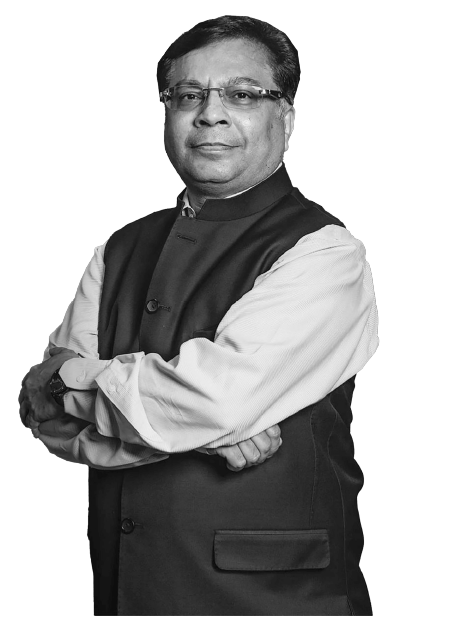
Rajiv Nath, Forum Coordinator, Association of Indian Medical Device Industry (AiMeD)
The medical devices imports continued to grow at an “alarming” level by 41 per cent in FY22. India imported medical devices worth Rs 63,200 crore in 2021-22, up 41 per cent from Rs 44,708 crore in 2020-21, as per data from the Union Ministry of Commerce and Industry.
China remained the top import source for India as medical device imports from China grew 48 per cent from Rs 9,112 crore in 2020-21 to Rs 13,538 crore in 2021-22. Imports from the US also increased steeply by 48 per cent to Rs 10,245 crore in 2021-22 from Rs 6,919 crore in 2020-21. The value of medical devices from China was nearly the same as the combined value of imports from Germany, Singapore and the Netherlands in 2021-22. It has led to domestic industry players shutting shop as the local industry cannot compete with cheaper Chinese imports. This is a lost opportunity for Indian Manufacturers to grow & compete globally but saw with dismay dumping of Chinese imports when duties were slashed to zero %.
Sadly, with over two years of PM Narendra Modi’s call for self-reliance Aatmanirbhar Bharat, India’s trade deficit with China is on high rise. The overall trade deficit with China widened to a record $72.9 billion in 2021-22. If the Govt. implements even 70% of the recommendations recently made by the Parliamentary Committee on Health, we can see a reversal on the import dependence and growth of the domestic industry which will bring in affordable wider access to medical devices leading to better healthcare delivery. We are very optimistic and hope that we can realise our vision to be among the top 5 Manufacturing Hubs in the world for medical devices.
AiMeD has the following Budget recommendations to end the 80-85% import dependence forced upon India and an ever-increasing import bill of over Rs. 63,200 Crore:
1. We are more than hopeful and positive that the Govt. will act upon the request of the Indian Medical Device Industry for a Separate Department of Medical Devices. This key strategic need has also been recommended by the Parliamentary Committee on Health.
2. AiMeD urged the Govt. to consider shifting from an 8 Digit HS Code to a 10 Digit HS Code as done by USA and Europe to give more granular data for enabling better analysis and policy making.
3. As done for Mobile Phones, the Government should protect the manufacturing base in India by increasing Basic Custom Duty on import of Medical Devices to at least 10 to 15% from current 0-7.5% duty though WTO Bound rate is mostly 40%. Due to such low custom duty India is importing Rs. 63,200 Cr of Medical Devices and is over 80% Import Dependent. This 80% can be reduced to below 30% with correct policies as done for mobile phones and consumer electronics.
4. Instead of 18% GST applicable on some Medical Devices that are not luxury goods, the GST needs to be a flat 12% for all Medical Devices. Also reducing GST to 5% is making Indian products non-competitive to imports as then manufacturers are unable to keep reduced Ex-Factory prices based on lower input costs net of GST.
5. Trade Margin Monitoring: The purpose of low Duty was to help consumers get affordable access to Devices. This objective is not realized if consumers will be charged a high MRP of 10 to 20 times import landed price. Customs recording of MRP on Bill of Entry will assist to bring in data generation for Policy Making by evidence of a Trade Margin Rationalization policy for the Manufacturer / Importer so that there is a capping of maximum 4 times on the Ex-factory price and on import landed price of Indian Distributor (at first point of sale viz. when GST/ Import Duty is 1st levied on entering into the market).
The Indian medical devices industry has the potential to reach $50 billion by 2030. We request kind consideration of Govt. of India for encouraging domestic manufacturing to be sustainable in long term for becoming AtmaNirbhar and to address National Healthcare Security needs exposed at the onset of COVID and for Ease of Doing Business. We still believe PM Shri. Narendra Modi’s call for self-reliance and an Aatmanirbhar Bharat will not only see India emerging as a manufacturing superpower but will also strengthen India to vie for being the 2nd factory in world for Medical Devices & a dependable Manufacturer of quality products in the Global supply chain. We have shown the ability and capability of Indian Entrepreneurs during Covid to Make in India when we have the support of Govt.
………………………………………………………………………………………………………………………………………………………………………………………………………………………………………………………………………………………….

Gaurav Agarwal, MD, IITPL Innovation Imaging Technologies Pvt. Ltd., Director – Innvolution Healthcare
Increase government spending on healthcare as a percentage of GDP to 3%, as other BRICS economies spend between 6-10% of GDP on
healthcare.
• Reduce the tax liability of companies that manufacture high-import dependence devices by deducting R&D expenses from their taxable
income.
• Implement a phased increase on basic customs duty for highly importdependent medical devices such as MRI machines, CT scanners, and Cath
labs.
• Decrease the basic customs duty on components of devices with high import dependence or national need, such as stents, ultrasound
equipment, and Cath labs.
• Remove the inverted duty structure on stents, where imported finished products have zero basic customs duty, while components have a duty of
11-12%.
• Create a separate fund of funds to support the development of MedTech start-ups.
• Modify existing Production Linked Incentive schemes to make them more attractive to start-ups, as current schemes tend to benefit established
companies more.
• Consider the use of convertible loan agreements (CLAs), similar to those used in Europe, to cover the costs of technology transfer, prototyping, and
validation for medical devices of national importance.
• Make mandatory for MedTech Parks to allot incentives to create a vendor ecosystem, particularly in areas such as medical materials, injection moulding, PCB/semiconductors, LED screens, and battery packs.
………………………………………………………………………………………………………………………………………………………………………………………………………………………………………………………………………………………….
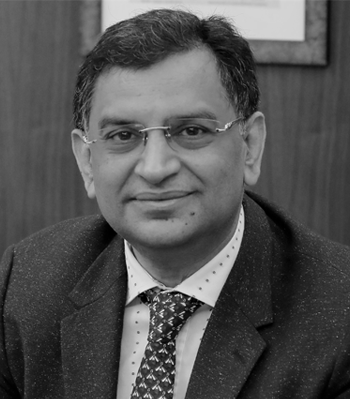
Himanshu Baid, Managing Director, Poly Medicure Ltd. (Polymed)
The union budget should have a strong emphasis on the healthcare sector. Like last year, MedTech industry is
expecting certain other reforms. “Affordability and accessibility have been the focus of the government. More needs to be done, starting with an increase in healthcare budget allocation to at least 2.5% of the GDP which will provide the desired impetus.
All districts should have AIIMS like Hospital in next 5 years to strengthen crucial healthcare infrastructure in every part of the country. We are expecting that Govt. will formulate new and effective models to bring down the import dependence, encourage R&D, ensure simpler regulatory processes for swifter approval of locally invented innovative medical devices, promote preventive healthcare, and strengthen the medical education system.
To make India truly a ‘Global hub of medical devices’, right investments in R&D will help in propelling the sector forward. Restoration of higher percentage of deduction against R&D expenses will encourage innovation. Further, a lower GST rate on research related activities and clinical trials will be a booster.
Govt. should also consider lower rate of GST on medical devices to increase affordability. It is anticipated that our long pending demand of harmonizing to a uniform GST rate of 12% will to be looked at, Medical Devices and Equipment sector currently has 3 slab rates of GST – 5%, 12% and 18%. To make exporters especially MSMEs remain competitive in the global market, Govt. should consider increasing export incentives under RoDTEP to 2% from the existing 0.5% to compete with exports from neighbouring countries.
Govt. needs to allocate more money in preventive healthcare, given the significant rise in non-communicable and lifestyle diseases in the country.
There is a severe shortage of skilled healthcare workers in the country. A separate budget must be kept aside for skilling & up-skilling of clinicians, nurses, paramedical staff and other care providers. Setting up of new Medical Colleges & Nursing Schools will give the desired push. Govt. should also allocate budgets for setting up dedicated MedTech colleges on the lines of NIPERS.
Hope healthcare gets the deserved attention.
………………………………………………………………………………………………………………………………………………………………………………………………………………………………………………………………………………………….
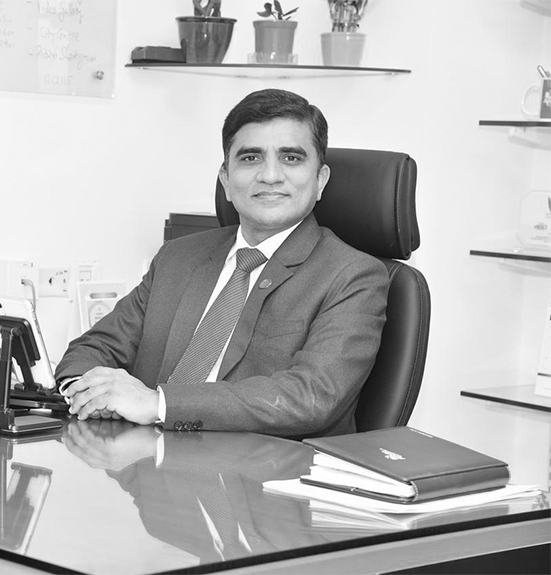
Neeraj Lal, Chief Operating Officer Apollo Hospitals, Gujrat Region
Amid Finance Minister Nirmala Sitharaman kicking off pre-budget consultations, we are expecting an increased focus towards healthcare sector of the country. Currently, India has the youngest workforce but with dropping fertility rates and increasing lifespan, we are going to have a huge surge in health care expenses in the next 10 to 20 years. The lifestyle disease incidence is doubling every 10 years. In the financial budget 2023-24, government should promote public-private partnerships & should allocate funds for the development of healthcare infrastructure with the help of PPP models. PHCs & post hospitalization care should be taken care considering the vast majority of Indian population staying at rural settings.
“Healthcare systems internationally are investing heavily to implement personalized medicine because there is a clear opportunity to develop more efficient and effective healthcare delivery systems. India cannot waste more time if the country wants to become a globally significant personalized medicine and innovation hub.”
Indian startups working in the healthcare domain using deep technologies for building tools and platforms for early diagnosis, pre-screening and predictive analysis of health conditions require extensive and continued support and guidance at multiple levels. Fortunately, the government of India has been very liberal and encouraging towards such start-ups at an early stage so far. I personally believe, as the way forward, more support and incentive schemes should be provided beyond the early stage which is indeed “Valley of death”. This major step if realized will promote research and development, reduce turnaround time and greatly enhance the chances of their success
………………………………………………………………………………………………………………………………………………………………………………………………………………………………………………………………………………………….

Sunil Khurana, CEO & MD, BPL Medical Technologies Pvt. Ltd.
- Import Duty of Medical Devices that are made in India are to be raised to the level of 25% across all categories (other than Cyclotrons , Linear Accelerators, PETCT, High End MRI, High End CT , Robotic Surgery equipments etc which currently are not manufactured in India ) , this will be tough for us all but will accelerate making of products in-house and in less than 6-8 months results will be seen which otherwise may take 6-8 yrs.
- COMPLETE BAN on importing all the USED (second hand ) Medical Devices is to be implemented which otherwise is counter-productive to Indian manufacturer e.g. if someone is now making good quality Cath Lab and trying to sell 30-40% lower than new machines from MNC companies. By allowing second hand medical devices which may match with the price of NEW Indian products, Indian product sales might get effected as many customers may prefer second hand products just due to brand comforts. This product of Cath lab example I have shared , as three companies are doing excellent job of manufacturing Cath lab in India ( IITPL , Allenger & GEHC).
- PLI today is not suitable for small organizations as threshold limits are too high. Amendment to that is required otherwise it will only suit MNCs who will produce here and take to other nations and still get 5% benefits of PLI thus defeating the entire purpose of growing/developing Indian manufacturing Ecosystem.
- Bare Minimum of 50% salaries of R&D MUST be picked by GOI (proper Audit so that wrong cost is not factored by shady guys who generally see GOI funds to fleece) . These ways quality hires will grow and direct participation by GOI and will motivate top class brain to pick Medical devices sector as good destinations.
- There should be 20X of current numbers of GOI agencies owned by GOI for EMI/EMC testing and at right promotional cost like AMTZ has planned. Also, 3D printing and hard tool making needs to be subsidised which normal companies find un-viable currently. For better look and feel of new products such tools cost is high and support from GOI is requested to pick 80% of tool cost. This should be seen as part of R&D initiatives.
- Strictly buying Indian made products, of course (BIS/CDSCO/AEBR) approved products where quality is not compromised by all states uniformly.
- Medical Devices Sector will grow only by doing net export higher than domestic consumption. Currently just 2-3 % export incentive is offered by GOI , which does not help competing with Chinese Companies who get very high export incentive. GOI must aim for > 10% in this space.
- One of the BEST NON-INVASIVE medical Devices products is ultrasound. PNDT is very old norm (started in 1994) and poorly managed in States/Districts. This is restricting the usage of this great technology in India. We MUST work to simplify PNDT using central website and no manual intervention is requested by dissolving district/state level PNDT bodies………………………………………………………………………………………………………………………………………………………………………………………………………………………………………………………………..
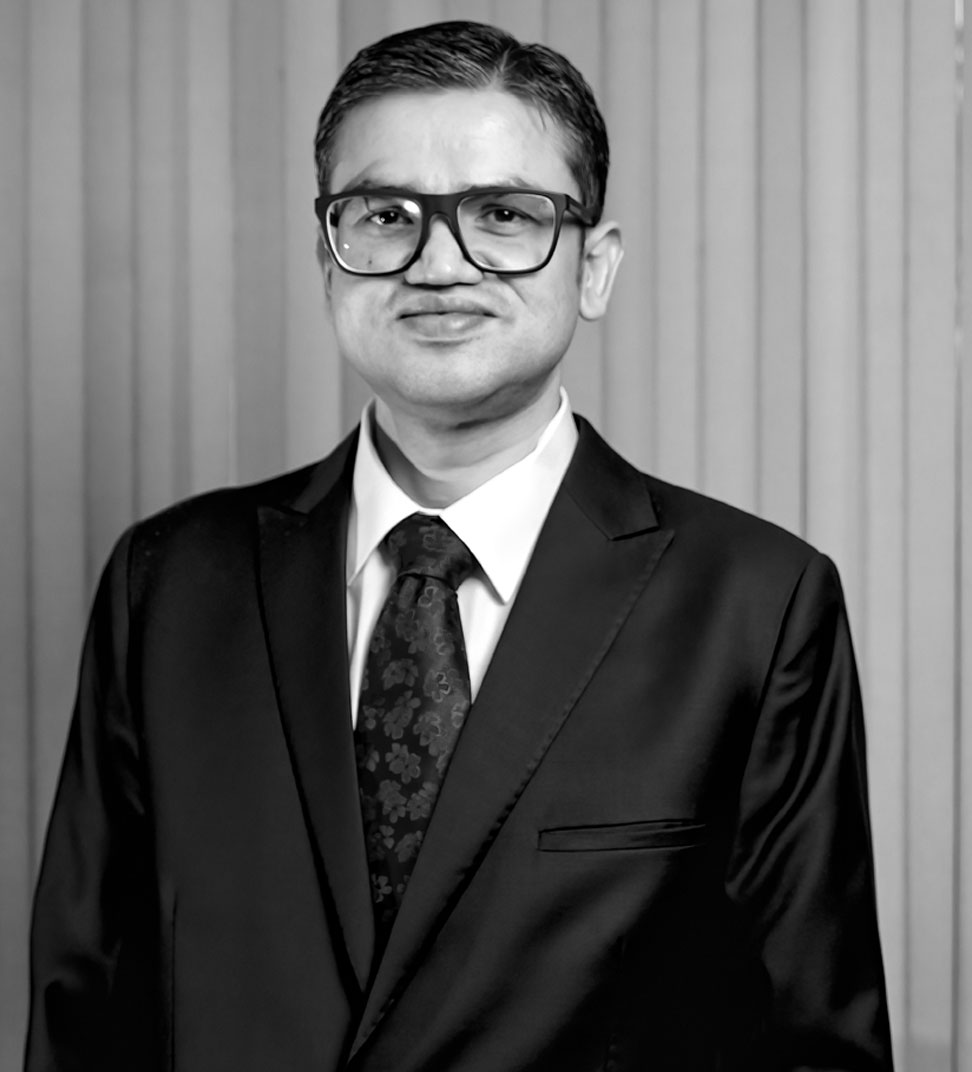
Jatin Mahajan, Secretary – Association of Diagnostic Manufacturers of India (ADMI),Managing Director – J Mitra & Company
The Diagnostics – Medical Devices Industry has proved its capabilities & determination and outperformed all expectations in the past two years. MedTech’s contribution in India had emerged from the shadows. It took center stage during the corona pandemic to become self-sufficient in producing diagnostic kits and medical devices – Rapid Antigen Test kits, RT-PCR kits, ventilators, IR thermometers, PPE kits & N-95 masks. Thus, diagnostics are already playing a significant role in furthering India’s agenda of ‘Healthcare-for-all.’
India is the global Centre for frugal medical device engineering. However, most hi-tech innovative products and technology originate from a well-developed ecosystem, and US + Europe + Japan accounts for about 85 percent of the roughly $220 billion revenues. Therefore, the Government should promote an innovation culture in India to promote indigenous industry and reduce our dependence on imports.
Several factors are contributing to a slower pace in the development and growth of the Indian MedTech Industry. However, various policy aspects can address these growth challenges and catapult Indian MedTech to a higher global ranking.
As Secretary of – the Association of Diagnostic Manufacturers of India (ADMI) and Managing Director – of J Mitra & Company, I expect the Government to lay down a more conducive environment for the growth of the MedTech industry by addressing the following challenges in the forthcoming budget.
Catalyze the availability of a substantial supplier base for raw material
Growth in the manufacturing of sophisticated devices depends on the availability of a domestic supplier market for parts and components, which needs to be revised. An indigenous supply base for critical components will not only build reliability in the supply chain but also reduce the input costs for device manufacturers, making the indigenous devices more price competitive. The Government should take measures to extend its support to reduce the cost burden on the manufacturers through initiatives such as –
- Provide concessional power tariffs, cheaper access to land for setting up manufacturing units.
- Fast-pace the creation of common infrastructure facilities that include –
– Component Testing Centre/ESDM/PCB/Sensor’s facility; Electromagnetic interference & Electromagnetic Compatibility Centre; Biomaterial/Biocompatibility/Accelerated Aging Testing Centres; Radiation Testing Centre
– Medical grade molding/milling/machining/tooling center; 3D designing and printing for medical grade products
– Solid waste management/ETP/STP/Electronic waste management unit
– Common Warehouse & Logistics facility, etc.
Providing lower interest rates to manufacturers during the initial years of building the supplier ecosystem
The Government’s procurement policy does not favor Indian manufacturers (no incentive during procurement for domestic companies)
- The Government is a significant buyer of medical devices in India with its medical colleges and public healthcare centers. However, public procurement policies for medical devices do not provide preferential market access to locally manufactured devices. As a result, the procurements in most cases during the pandemic were more in favor of foreign-made products with questionable antecedents.
- There should be a systematic review of local capabilities and allow exemptions only for products with insufficient local manufacturing capacity.
Regulatory Structure
The Ministry of Health & Family Welfare has notified the Medical Devices Rules, 2017, under the Drugs and Cosmetics Act, 1940, to have comprehensive regulatory conditions for importing, manufacturing, selling, and distributing medical devices based on risk-based criteria. Under these rules, the Class A and Class B medical devices (devices of relatively lower risk grade) are licensed by concerned State Licensing Authorities based on conformity assessment done by Notified bodies which CDSCO registers. Class C and D medical devices (relatively complex devices with higher risk grades) are licensed by the Central Licensing Authority based on the conformity assessment done by Medical Device Officers of CDSCO. However, the current structure involving regulatory authorities across the Centre & states has further scope for harmonization of processes & timelines to improve the overall predictability levels in these processes and to attract global players in the industry. Policy predictability is a barrier to operating in the Indian market.
The placement of medical devices, drugs, and cosmetics under the same regulatory authority is a significant anomaly that needs to be corrected. This has been a regular suggestion by the medical devices industry for many years. There should be an altogether separate regulatory authority for medical devices. Not all officials of the current regulatory body are well-equipped and qualified to understand, access, and license medical devices.
Promote an Innovation Ecosystem
Medical Devices is an innovation-driven industry where incremental innovation is a norm, and newer generation products are usually launched every 2-3 years. Altogether new products may take 5-10 years to reach a market-ready stage. “Make in India” has been a significant trigger to promote manufacturing activities in India. “Innovate in India” is a natural precursor to “Make in India” for the medical device industry and hence needs equivalent focus and support to realize the dream of making India a Global Medical Device Hub. The Government should re-energize its effort and –
Establish ‘innovation forums’ to facilitate collaboration amongst industry players, academia, and scientists in the medical devices sector
Launch Innovation Linked Incentive (ILI) scheme on the lines of the Production Linked Incentive (PLI) Scheme
Set up a seed capital fund of INR1000 Cr. to facilitate R&D on frugal-innovation projects focused on critical device segments with growing domestic demand, like BIRAC
Establish innovation parks providing infrastructure support to innovation-focused start-ups
Promote R&D with commercial viability through Public Private Partnerships for prototyping facilities, precision engineering facilities, etc.
Medical Device Innovation demands interactions with healthcare professionals (HCPs) right from the ideation stage, and therefore globally, “Co-Invent” or “Co-Innovate” in medical devices is the widely accepted model. Thus, the Government should ensure that the Uniform Code for Medical Device Marketing Practices (UCMDMP) doesn’t restrict these meaningful interactions for organizations heavily investing in R&D in India is essential.
Creation of a Skilled Talent Pool
Skill availability is critical if the Government is to realize its vision for the medical devices sector in India. While the Government has launched some courses through NIPERs, substantial efforts are needed to ensure India finds its rightful place among global medical device hubs:
The medical Devices Industry is interdisciplinary, and therefore it needs competent human resources in many areas like polymer engineering, material science, etc. Thus, the Government must consider augmenting the number of institutions offering industry-relevant courses and setting up Centres of Excellence providing training and placements to cater to the growing need for skilled resources in the industry.
Globally, medical device research is primarily carried out in academic institutions, followed by the designing and prototyping of medical devices by corporates. Therefore, a robust Industry-Academia collaboration model is required to promote the same culture in India.
Duty Structure rationalization to make local devices price-competitive
The import duty on most finished devices ranges from zero to 7.5 percent, the lowest amongst BRIC countries. This subject was touched on in Budget 2022, but the actions needed to be revised. The duties on critical components and finished devices must be reviewed and structured so that locally manufactured devices can be priced competitively in the market after adding applicable duties and taxes.
Harmonize Quality Standards to match global standards
The Bureau of Indian Standards should focus on harmonizing the Indian Standards with globally acceptable quality standards so that domestic device manufacturers attain global competitiveness in the crowded market. ICMED is a step in the right direction, but the pace could be faster, and it is not a de facto implementation. Deploying different quality standards for the domestic market, especially vertical standards, needs to be critically examined as India aims to be a net exporter of medical devices in the long run. Having harmonized standards for domestic and export markets can help indigenously manufactured medical devices compete against their global counterparts and make the quality of indigenous instruments more acceptable in the worldwide market. Moreover, it will enable global companies to form partnerships with Indian manufacturers to produce devices for local and international markets.
India has the potential to capture a 12-15 percent market share in the next 25 years if these industry challenges are quickly addressed.
………………………………………………………………………………………………………………………………………………………………………………………………………………………………………………………………………………………….

Dheeraj Jain, Founder & MD, REDCLIFFE LAB
The Indian diagnostics industry has been rapidly evolving, and 2022 was no exception, with increasing demographics, urbanisation, penetration, and affordability driving its growth. The diagnostics industry has emerged as a key component of the healthcare segment owing to the increased dependence of medical experts and professionals on the industry to validate, accurately diagnose the ailments, and provide the required treatment protocols, along with the shift in consumer psyche and preference as people are extra vigilant about their health and well-being.
Moreover, the pandemic brought about a paradigm shift in the diagnostic market regarding its scope and capacity, while emphasising the need for diagnostics and treatment. In 2023, the diagnostic market is anticipated to grow further, there is a need for the players to build a robust Omni channel strategy. They will need to add more capabilities and provide more value-added services. With increasing competition and tests becoming more commoditized, there is also a need for super-efficient operations using digitalization tools such as AI for process efficiencies, thus keeping the bottom line healthy. Also, preventive care is undervalued despite the fact that it can detect life-threatening health conditions at an early stage and reduce medical expenses to a great extent. Hence, expanding testing infrastructure or diagnostic services in Rural Bharat should be a top priority of the government going forward.
Additionally, the digitalization of healthcare should be emphasized, as it’s an important pillar in delivering value-based care across the healthcare continuum in India. Adaptive intelligent solutions can help lower the barriers between hospitals and patients, improving access to care and enhancing overall patient satisfaction, particularly in tier II and III cities in India. Emphasis should also be placed on developing skilling institutions to meet the increased demand for healthcare professionals.
………………………………………………………………………………………………………………………………………………………………………………………………………………………………………………………………………………………….

Surajit Chakrabartty, Chief Financial Officer, MedGenome Labs
Surajit Chakrabartty is a financial expert with over 18 years of experience across diverse sectors such as e-Commerce, Retail, Media & Advertising and Manufacturing. Process implementation and building financial enterprises are his core strengths. In his career span, Surajit has successfully managed multiple projects including ERP implementations and internal control systems design across organisations. At MedGenome, he leads the finance function and is responsible for treasury management, financial forecasting, planning, and budgeting, reporting and assessing future business risks. He has successfully automated multiple processes while adhering to quality standards, rules and regulations. Surajit brings with him extensive experience and in-depth expertise of debt and other financing developed over his stellar career. Previously, he was associated with Redbus.in, Medybiz Pharma Private Limited and Rediffusion Y&R. He is also featured as one amongst India’s Most Influential CFOs (awarded by the Chartered Institute of Management Accountants). Surajit is a Chartered Accountant from ICAI.
Over the last few years, the Government of India has made significant efforts towards transforming the healthcare sector. Leveraging the power of digitization, innovation, science, and technology, we have been able to create awareness, expand the reach, affordability, and quality of healthcare services across the country. We now need to focus more on early diagnosis, prevention, and targeted treatment. Increased investments in R&D and healthcare technology will give the much-needed impetus to the country’s emergency care response infrastructure. With India being home to about one-third of all rare diseases, Genomics plays a major role in healthcare screening and management. Collaboration among industry and academia with policies and regulations will promote the right investment and research opportunities in this field. Government led genome sequencing programmes and population wide genome sequencing initiatives in partnership with some of the private players will provide the right insights and help in better disease management. We look forward to the Government taking steps in this direction.
………………………………………………………………………………………………………………………………………………………………………………………………………………………………………………………………………………………….

Omar Sherief Mohammad, Cluster Head India, Middle East & Africa, Roche Diabetes Care
Increased budgetary allocations for programs such as the National Programme for Prevention and Control of Cancer, Diabetes, Cardiovascular Diseases & Stroke that aim to prevent and treat non-communicable diseases (NCDs), are crucial. Diseases such as diabetes pose a public health challenge that needs regular screening for detection, as well as sustained adherence to treatment and management. There is a need to monitor the continuous engagement of health systems, at all levels, to ensure a continuum of care. Moreover, screening and treatment at primary health centres via Ayushman Bharat needs to be scaled up.
Ensuring adequate funds for the rollout of the National Digital Health Mission will also help capture and analyse healthcare data, in line with the current data privacy regulations. This will help the country in two ways. Firstly, it will enable data generation that can help build policies for end-to-end healthcare support such as early screening and diagnostics programmes along with reimbursement of NCD care, etc. Secondly, the adoption of a digital framework will improve the delivery of targeted and personalised care leading to improved prognosis and an overall reduction in the health-economic burden in the future. A significant increase in healthcare spending will aid the implementation of a multifaceted approach that drives awareness, early diagnosis, adherence to treatment, better preventive measures, counselling, and overall access to quality healthcare.
…………………………………………………………………………………………………………………………………………………………………………………………………………………………………………………………………………………………

Dr. Ajay Sharma, Chief Medical Director, Eye-Q
Post-pandemic, there has been a major shift in the attitude of people and the government toward healthcare. People have now adapted to a more conscious lifestyle. Additionally, the government has been proactive in strengthening the healthcare framework in the country by launching schemes like Ayushman Bharat, Aam Aadmi Bima Yojna, etc. However, still, there is a lot of work to be done to ensure that everyone receives quality healthcare in the country, and it is a long way to go. The government needs to spread awareness so that people can reap the benefits of the schemes being made available, and more insurance coverage should be provided to people belonging to the low-income class. It demands collective efforts from all ends to fill in the existing gaps in the healthcare system in India. The new-age healthcare startups will also play a major role in ensuring that India has a proper healthcare infrastructure that caters to all individuals’ needs
About Eye-Q: The Eye-Q hospital chain is committed to providing the best quality eye care at an affordable cost across India. under and CMD leadership- Dr. Ajay Sharma- one of the most renowned eye surgeons in India, aided by a team of specialists with rich experience in their respective specialties from top hospitals across the country. Established in 2007, Eye-Q is a chain of 37 Super- Speciality Eye Hospitals in Delhi-NCR, Haryana, Uttar Pradesh, Uttarakhand, and Gujarat. Also, two hospitals in Nigeria, Africa.
…………………………………………………………………………………………………………………………………………………………………………………………………………………………………………………………………………………………
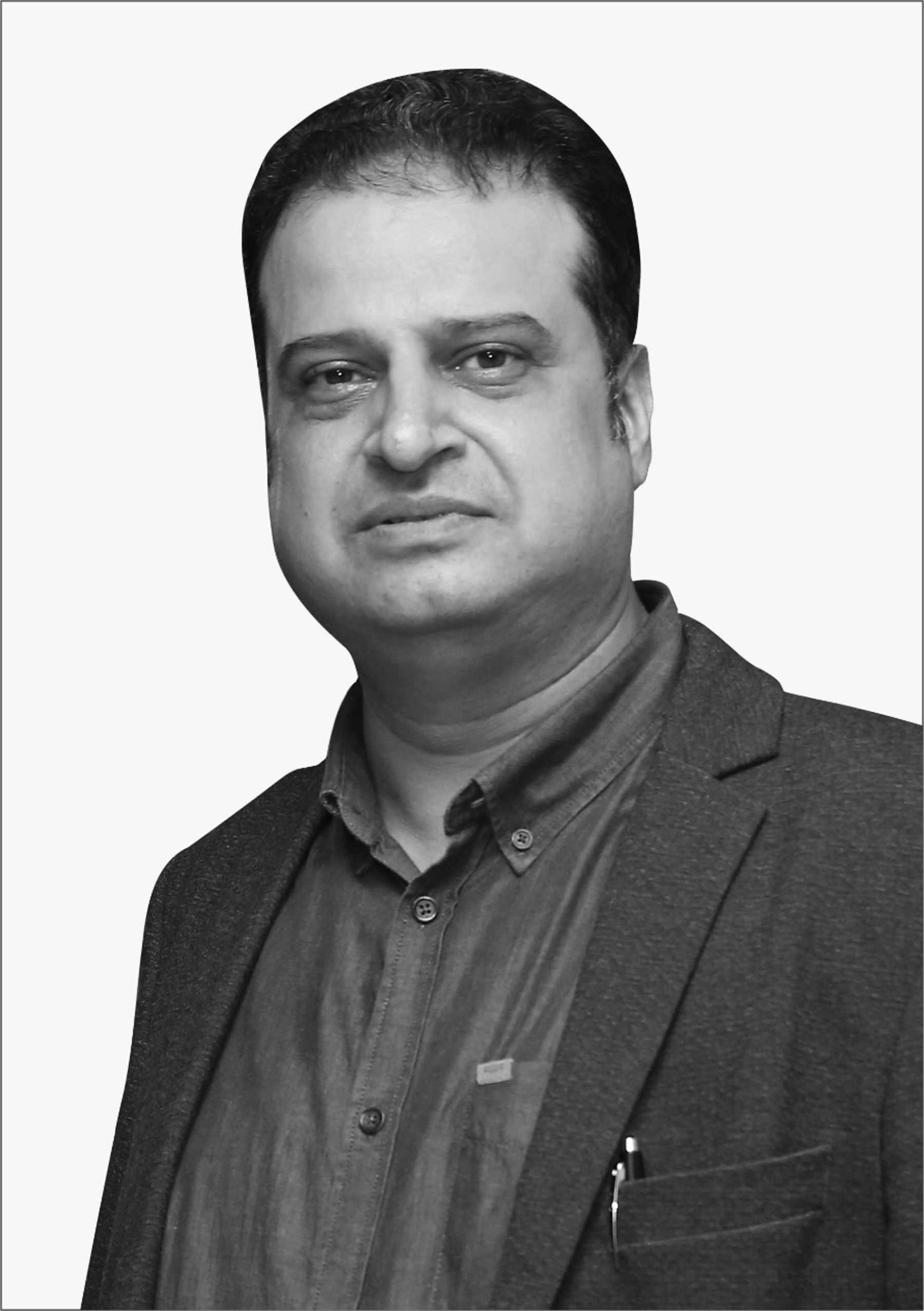
Dr. Alok Khullar, CEO, Gleneagles Global Health City Chennai
Covid19 exposed the vulnerabilities in our healthcare delivery system and overall Healthcare Industry. Our government is considering several measures for the overall economy to recover. Industry experts suggest a multi-pronged approach to strengthen healthcare delivery & outcomes. The approach includes focus on budgetary allocation and focus on enhancement of capacity in the following areas:
1. Medical Education: In recent years, many additional medical colleges are being set up increasing the number of doctors passing out. However, a critical area for improvement is the quality of medical education and hands-on training for these doctors to be job ready to deliver patient care at a minimum standard. In addition to attracting the right faculty, there must be investments in building skill labs across medical colleges and standardizing the assessment criteria and framework.
2. Healthcare Infrastructure: Expanding bed capacity is not enough as the quality of care delivered depends on multiple factors including the type of bed capacity (Ward vs ICU), medical equipment, Oxygen supply, and Supply chain efficiencies among multiple other factors. The private sector plays a huge role in providing tertiary & quaternary care and thus should get the adequate financial impetus to enhance its capacity. Hospitals, in particular, get economic SOPs like Special Economic Zones do to develop and deliver care at an effective cost for patients.
3. Nursing & Allied Healthcare Staff Education & Training: The nursing workforce in India has one of the highest attrition rates in the country as they go overseas for better financial remuneration and quality of life. There must be sustained investments into improving the quality of Nursing Education and hands-on training in the existing Nursing colleges to have a job-ready workforce to replace the exodus of trained nurses from India. A similar focus is needed in Allied & Paramedical Staff education & training.
4. Medical Equipment: Most of the high-end Diagnostic, Imaging, Intervention, Precision, Monitoring & Surgical equipment are manufactured abroad and imported to India and come at a huge cost to Healthcare Providers. The industry requests the Government to invite Global Medical Equipment Manufacturers to set up factories in India under “Make in India” to lower the cost of production and therefore price and provide employment to millions of Indians.
5. Research & Development: Healthcare Research in India is limited and needs sustained support from the Govt to enhance and increase the R&D efforts and sell the successful results to the entire world. As of now very few Innovator molecules if any are researched & developed in India. The same goes for precision surgical instruments.
6. Healthcare Financing: Considering the rising cost of healthcare, it is essential to have health insurance for every family. Unfortunately, one has to insure a vehicle mandatorily to drive on roads but the driver and passengers don’t have to have health insurance. The government should provide better financial incentives for people to buy health insurance and make it mandatory for people above the poverty line to reduce the financial burden on household savings because of illness. Further impetus is needed for the development of the health insurance industry.
…………………………………………………………………………………………………………………………………………………………………………………………………………………………………………………………………………………………

Anish Bafna, CEO & MD, Healthium Medtech
The medical device industry is highly capital intensive, hence requires the constant intercession of the government to encourage manufacturing and production, both in scale and quality. As we gear up for the Union Budget of 2023-24 with the spirit of self-reliance, the industry demands favourable policymaking in line with the current inflationary challenges. Reduction of custom duties on raw material, removal of the additional 5 percent health cess and increasing export incentives under Remission of Duties and Taxes on Export Products Scheme (RoDTEP) remains critical for trade margin rationalization. Relooking at the tax and tariff structures on medical device imports would go a long way to provide some leeway for the industry to flourish and consequently boost the domestic R&D ecosystem.
For the medtech sector to grow holistically, the compliance burden needs to be brought down collectively to make the environment conducive for business. The ease of application and registration procedures, supervisory regimes, credit structures, transparency in pricing, taxes and cross border trade will encourage local manufacturing, R&D and address the concerns in our supply chains. Strategic investments and partnerships with commissioned Medtech Parks and their readiness for national and international companies should be able to push the needle in the positive direction. The Union Budget of 2023-24 needs to outline industry supportive policies, simplified protocols, and simple GST norms to aid the overall development of the medtech sector.
…………………………………………………………………………………………………………………………………………………………………………………………………………………………………………………………………………………………

Sanjay Jaiswal, M.D. AIROX TECHNOLOGIES PVT LTD
Over recent years, the government has spurred efforts to support local R & D and manufacturing of medical devices by setting Medical Devices Parks and implementing various PLI Schemes. “Made in India” has been significant trigger to promote manufacturing activities in India.
India has a pluralistic healthcare system with both public and private health sector playing important roles. The COVID 19 Pandemic has exposed the vulnerabilities and challenges in medical oxygen production and delivery system in India, thereby highlighting the importance of producing on-site medical oxygen with PSA oxygen generators compared to procurement of oxygen through cylinders or filling-refilling of liquid oxygen in cylinders. In May 2021, India’s hospitals were at breaking point, the Country found itself in the epicenter of global pandemic and one the biggest challenges was providing enough medical oxygen to critical patients, who were unable to breathe unaided, as demand rose ten-fold.
The Ministry of Corporate affairs has introduced manufacture and set up of oxygen infrastructure expenditure as part of CSR activity in May 2021. Various state governments also come up to deal with oxygen shortage in the country. But all the measures fall short, with Centre facing criticism for its failure to expand and operate installed oxygen generating capacity.
- Widescale Policies needs to be framed keeping in mind the oxygen needs for growing number of hospitals and oxygen demand in India for next 5-10 years’ time period.
- Robust Hospital infrastructure with basic amenities such as oxygen production capacities needed to be defined while approvals for hospital setups in the country.
- The on-site PSA generators setup should form part of hospital infrastructure making hospitals self- dependent in oxygen generation.
- Various incentive schemes for PSA generators manufacturers in form of Capital Subsidy, Subsidy in land acquisition for manufacturing setup and incentives in Research and Development expenditure for upgrading the PSA technology.
- Tax rebates and reduction in GST rates is the need of hour for boosting manufacturing of PSA technology generators in India
- High quality standards and good track record of products needs to be certified by Government in tender procurement process and for Government Hospitals thereby only genuine players can come for contributing to PSA growth for oxygen production in the Country.
About Airox:
Airox Technologies Limited is one of the most renowned manufacturer and supplier of medical grade oxygen through PSA Technology, committed to providing the best quality PSA Oxygen Generators, Nitrogen Generators, Sterilizers, Installation of Modular Operation Theatre, Medical Gas Pipeline System and Pneumatic Tube Systems equipped with highly advance technology in the country.
Established in 2012, Airox Technologies Limited with more than 900 installations across 28 States and 3 Union Territories is a market leader in medical oxygen generation in India, aided by team of experts with rich experience in their fields, Airox Technologies Limited provides bunch of products and services with PAN India presence of highly qualified service engineers with more than 70 + service team in the country.
………………………………………………………………………………………………………………………………………………………………………………………………………………………………………………………………………………………..

Sapna Soni, Head – Government | Regulatory Affairs & PR, Mindray Medical India Pvt. Ltd.
Against the backdrop of the ‘epidemiological’ crisis witnessed by the Human Race, one should not see medical devices from a commercial perspective. It’s a sector that engulfs the world as one family – Vasudev kutumbakam!
It should be a NO STRINGS ATTACHED sector for a healthier Bharat! The health of the country is directly proportionate to the GDP of the country. This calls for attracting imports of high technology and capital-intensive medical devices which have a considerable gestation period for manufacturing, to come in with lower Custom slab rates to make the same affordable for the public.
This also calls for incentivizing the sale of these high-technology medical devices to the hinterland of the country, as migration happens for employment or health reasons. Parallelly, it calls for further incentivizing the manufacturing base, encouraging foreign investments for R&D, and widening infrastructure.
……………………………………………………………………………………………………………………………………………………………………………………………………………………………

Daniel Mazon, Vice Chairman and Managing Director, Philips Indian Subcontinent
“Over the last three years, the healthcare industry has experienced unrelenting pressure due to the Covid19 pandemic. The Indian government was extremely proactive in promoting the adoption of digital technologies to tackle the challenges posed by the pandemic as well as increase the accessibility of healthcare in tier-2 and 3 cities. The upcoming budget should focus on building on the fantastic work that has been undertaken to encourage digitization in healthcare, aligned with the Atmanirbhar Bharat and Make in India initiatives. We look forward to the government’s support in ramping up local manufacturing in India, so customers can benefit from standardized delivery timelines and affordability.”
……………………………………………………………………………………………………………………………………………………………………………………………………………………………

Mr. Saransh Chaudhary, President, Global Critical Care, Venus Remedies Ltd, and CEO, Venus Medicine Research Centre (VMRC)
The upcoming Budget should aim at establishing India as the “Pharmacy of the World” by enhancing the manufacturing and research capabilities of the pharma sector through special allocations, tax concessions, incentives and grants. The government should allocate funds for setting up Special Economic Zones to boost drug manufacturing and research. These SEZs should be exempted from GST with the larger objective of putting up a self-sufficient infrastructure in place to enable Indian companies to move up the global value chain.
The Finance Minister should address the concerns relating to rising input costs, particularly the steep hike in API prices, by offering incentives to domestic API manufacturers on one hand and bringing about a reduction in GST and import duty on APIs on the other.
Considering that cutting-edge R&D holds the key to value creation, the government should announce incentives and grants for cost-intensive research, particularly in critical care segments, and get the Research-Linked Incentive scheme going. All the material procured by pharma firms for R&D purposes should be exempted from taxes. We must create a viable ecosystem to enable R&D-driven pharma companies in India to compete globally by offering interest subsidies, extending tax concessions to exporters and doing away with GST on clinical trials and research projects.
We also expect the Finance Minister to allocate funds to improve the pharma supply chain and distribution infrastructure by syncing it with latest digital technologies to ensure better access and uninterrupted deliveries in real time. These emerging technologies can go a long way in working our way up the value chain through reduction in costs and improvement in quality, thus giving Indian pharma companies a decisive edge.
……………………………………………………………………………………………………………………………………………………………………………………………………………………………

Deepak Sahni, Founder & CEO, Healthians
“The pandemic has instigated the need for people to monitor their self-health and accordingly apply lifestyle changes to prevent or manage diseases. And in such a scenario, cost effective, rapid and accurate diagnosis is of utmost importance. Hence to facilitate and motivate more and more people to go for preventive tests, the government should push for enhancement of health insurance premium exemption, and an increase in tax exemption on preventive health check-ups. At the same time, while healthcare services are exempt from GST, the high GST rates on diagnostic equipment, re-agents, lab supplies and devices, ultimately is a hindrance in bringing down the cost to the consumer. I look forward to some relief from this burden on the consumer by a reduction in the GST rates.”
……………………………………………………………………………………………………………………………………………………………………………………………………………………………

Dr. Sutapa Neogi, Director, IIHMR – New Delhi
It is difficult to predict the exact allocation of the Health Budget for 2023, as it will depend on a variety of factors such as the state of the economy and the government’s priorities. However, it is likely that the Indian government will continue to focus on increasing access to healthcare for all citizens, particularly in rural and underserved areas. These should reflect as increased allocation in the flagship programs like Pradhan Mantri Jan Arogya Yojana.
The Indian healthcare sector is expected to continue its growth trajectory in the coming years, driven by factors such as increasing awareness of health issues, rising incomes, and government initiatives to promote healthcare access. The growth of the private healthcare sector is expected to outpace the public sector, driven by rising demand for better-quality care and the increasing affordability of healthcare for more people.
The Next Wave of Growth in the Indian Healthcare Sector is likely to be driven by the following factors:
- The increasing adoption of technology in healthcare, such as electronic health records, telemedicine, and mHealth. Initiatives like ABHA through Ayushman Bharat Digital Health Mission should get strengthened.
- The need of skilled and trained human resource has been a challenge. None of the health budgets have looked at the human resources for health in a comprehensive manner. Thus, one of the expectations would be to look for an announcement in the field of Public Health Cadre.
- The growing importance of non-communicable diseases such as diabetes, heart disease, and cancer, which will require more specialized care and thereby warrants for additional allocation.
- Reduction on GST on active pharmaceutical ingredients (API) from 18% to 12%, is also warranted since expenditure on drugs & pharmaceuticals constitute 70% expenditure on health.
- The reduction of import duty on medical devices should ease the cost of care.
- The increasing focus on preventive health, which will drive demand for health screenings, vaccinations, and other preventative measures.
- The increasing popularity of Ayurveda, Yoga and Naturopathy, Siddha and Homoeopathy (AYUSH) and alternative medicine, should get more allocation which will also boost the healthcare sector in India.
National Health Policy (NHP), 2017 envisaged raising public health expenditure from the existing 1.15% to 2.5% of GDP by 2025 in a time bound manner. Previous few years have been challenging in terms of COVID Pandemic, but the consensus is that the structure to increase absorption capacities of states is in place. It is the right time to strengthen our health system with right allocations.
……………………………………………………………………………………………………………………………………………………………………………………………………………………………
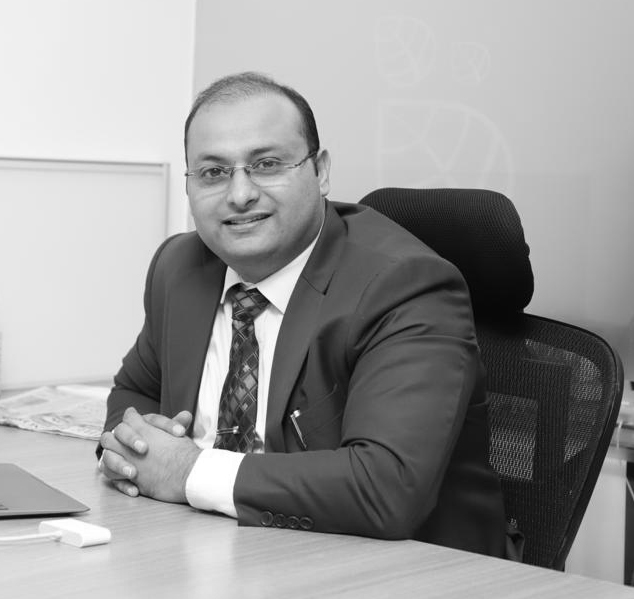
Anurag Kashyap, Director, Finance & Strategy, TR Life Sciences Private Limited
The Indian healthcare sector is one of the fastest growing sectors with a high contribution not only in terms of revenue but also employment as it employs 4.7 million people. As per a Report published by NITI Aayog, the healthcare market in India was expected to reach US$ 372 billion by 2022. Hospitals or providers are the backbones of the sector and account for 80% of the total healthcare market. Niti Aayog projects the hospital industry to reach $132 bn by 2023 with a CAGR of 16-17%. With rising dual disease burden-Communicable like COVID-19, Flue, and H1NI among others and Non-Communicable- the healthcare sector needs robust funding, infrastructure, capacity building, human resources, and a rational regulatory framework.
The upcoming Union Budget would create an enabling healthcare ecosystem if the government comes up with robust reforms in terms of providing a Regulator for the hospital sector, long-term credit facilities, a big push for Public Private Partnership (PPP), and tax incentives and relief.
Breaking Barriers with a Regulator
A hospital has to go over 100 statuary compliances and it takes years to complete that. There is a need for a dedicated Regulator in the healthcare sector. National Accreditation Board for Hospitals & Healthcare Providers (NABH), which is a watchdog for quality and standards for the providers, is well-equipped to fit in as a healthcare regulator. The institution, being an accreditation agency, knows all quality parameters and it is also aware of ‘hits and misses.’ It is an option already available and the government just needs to entrust it with the required statutory powers. Moreover, the government can also have a wider representation of its senior officials and experts to make the regulatory mechanism robust. The NABH is well-equipped to act as a Regulator for the segment and the government should think of it to remove Entry Barriers and streamline the system of compliance. The NABH, as a regulator and facilitator, can easily remove Entry Barriers and can create a Single Window mechanism for over 100 compliances. Ease of doing business, Quality, and Uniformity would become easier to achieve.
Rationalisation of Import Duty
Hospitals seek relaxation on imported medical equipment, as they intend to procure state-of-the-art latest technology to treat patients and get the best medical outcome. Over the years, the import of medical equipment has significantly increased. In 2021-22 imports were gone up by 41%. As per the industry estimates India imported medical equipment worth Rs 63,200 crore in 2021-22 compared to Rs 44, 708 crore in 2020-21. On the other hand, Indian equipment manufacturers seek a complete ban on the import of medical equipment or higher custom or import duty and other charges if not a complete ban. The industry has witnessed over 20% hike in the cost of medical equipment import in the last two years. It would take some more time for large hospitals to work on Indigenous medical equipment. Once Indian manufacturers match the global standards in terms of supply, range, and quality, big hospitals would be in a position to partner with them. Till that time the government should restrict itself in making imports expensive with heavy duties. The industry is always keen to be aligned with the ‘Make in India’ initiative or promote indigenous manufacturers. But, for big hospitals, it is more critical to maintain their global competitiveness. Hence, the sector would be expecting a reduction in import duties on medical equipment.
Call for Credit
For a long time, the sector has been expecting a robust credit mechanism to overcome the shortage of funds. Long-term (15-20 years) credit facilities would significantly reduce the burden. Interest rate, tenure, and collateral are the major concerns. Enabling easy access to capital at lower rates without collaterals would long way to creating a new healthcare ecosystem in the country. Lower-cost financing can be seen as a growth driver. The hospital sector has huge NPAs and hundreds of projects are stuck. The reason behind huge NPAs in the hospital sector is the fact that like other sectors, the lending institutions including banks start demanding repayment just after 2-3 years of the disbursement. Less than five years is too short a period. Infrastructure is partly ready and if the government and the RBI give a chance to revive these assets, the policy push will provide a much-needed boost to health infrastructure in the country. The Government needs to impress upon the RBI to look at this pain point seriously for the sake of the financial health of the healthcare sector.
Tax Reforms
The Goods and Services Tax (GST) on inputs increases the delivery cost by 18%. And the providers do not get any input credit facility. It has emerged as a major pain point for the healthcare sector which expects the government to shift hospitals from the exemption category to the zero-tax rate category which would enable the hospitals to take GST Input credit. Tax incentives for both existing and new healthcare projects are required. For new or green field projects a tax holiday period of 10 years, as given to Special Economic Zones and Tech Parks, would go long way to transform the sector. It is strongly recommended that the government should create similar zones for hospitals and extend all the benefits including tax incentives. This should not be limited to the hospital segment. Service providers, who are associated with hospitals, should also be included in such promotional schemes.
Push to PPP
The Budget for 2023-24 needs to focus on reviving and strengthening the Private-Public Partnership (PPP) model which has not seen much success. A few pilot projects in the different parts of the country showcases its potential which needs to be tapped fully. The PPP model has great potential to make healthcare more affordable and accessible by using technology to reach the last mile. In the areas of primary and secondary care, diagnostics-Imaging, vaccination, and standardization of services, the PPP model can play a critical role. The PPP model has the potential to transform the entire continuum of care, starting from admission to discharge and post-discharge period too. The sector would be expecting a big policy push to bring the derailed PPP model back on track.
Overall, the right policy reforms can transform the way India manages its healthcare delivery systems.
……………………………………………………………………………………………………………………………………………………………………………………………………………………………

Ameve Sharma, Co-Founder, Kapiva
We are glad that in the Union Budget of 22-23, a significant portion (Rs 3,050 crore) was allocated to the Ministry of Ayush to promote preventative healthcare. We are expecting this budget to increase further, in line with the uptick in consumer acceptance for preventive, traditional medicines in the post-covid era. The industry would appreciate an even greater increase in the budget earmarked for research grants in the field of Ayurveda, to foster innovation through government & industry collaborations, as the millennial consumer looks for proof of clinical efficacy. As a leading homegrown brand in the sector, we are hopeful that this Union Budget will contribute immensely to India’s Ayurvedic growth story.
……………………………………………………………………………………………………………………………………………………………………………………………………………………………………..

Yuichi Nagano, Managing Director, Sakra World Hospital Bengaluru

Ali Sait, CEO, Tech Avant-Garde Bengaluru,
…………………………………………………………………………………………………………………………………………………………………………………………………………………………..

Vijender Reddy Muthyala, Co-founder and CEO of DrinkPrime Bengaluru
While we applaud the government for making drinking water more accessible through initiatives like the Jal Jeevan Mission-Har Ghar Jal, we believe it is critical to make safe drinking water more affordable. Lowering or eliminating GST on water purifiers, as consumer durable, will help treat them as an essential service required by all Indians. It will encourage people to invest in their health while helping mission oriented brands like DrinkPrime provide clean, safe and healthy drinking water to everyone.
Lake rejuvenation and ground water regeneration is the need of the hour. There are several NGOs and startups that would benefit greatly if the government would sanction some budget for the same or launch initiatives that serve the purpose.
Similarly, taxation on ESOPs should occur at the final sale of shares rather than when they are offered. This makes attracting good talent difficult in an already competitive market with a severe talent shortage. If this is addressed, organisations will be able to offer additional benefits to potential or high-performing employees.
As more smart city plans flow out, we request the government to also focus on IoT technology as it is definitely the future of smart ownership.
……………………………………………………………………………………………………………………………………………………………………………………………………………………………..

AR. MANU MALHOTRA, Founder partner, Director, RSMS Architects, Fellow Indian Institute of Architects (FIIA), International Associate American Institute of Architects (AIA), Chairman, Assocham GEM, Healthcare Rating Program
As I work extensively on Healthcare projects and otherwise in general Healthcare Budget expansion is the need of the hour. Below are my expectation from the budget:
1. Allocate special funds for skill development in paramedical streams. The allocated budget should not only be increased but be sub-allocated to various departments
like, ABDM, Infrastructure, education, Human Resource, Research and other programs to ensure a holistic growth.
2. Healthcare should be exempted from GST, be made a zero-tax category business and be eligible for input tax credit on services delivered.
3. Encourage banks to provide long term loans with longer moratorium and at
subsidized rates for hospital projects.
4. Reduce custom duty on import of diagnostic equipment.
5. Look at expansion of Ayushman Bharat health infrastructure mission to the scale of Universal health coverage levels.
6. Along with the increase in public sector allocations towards health infrastructure and insurance schemes, government should focus towards encouraging homegrown innovations – both tech and process – that can help it achieve its universal health care mandate. This will require unlocking greater commercial investments to supplement
public resources.


